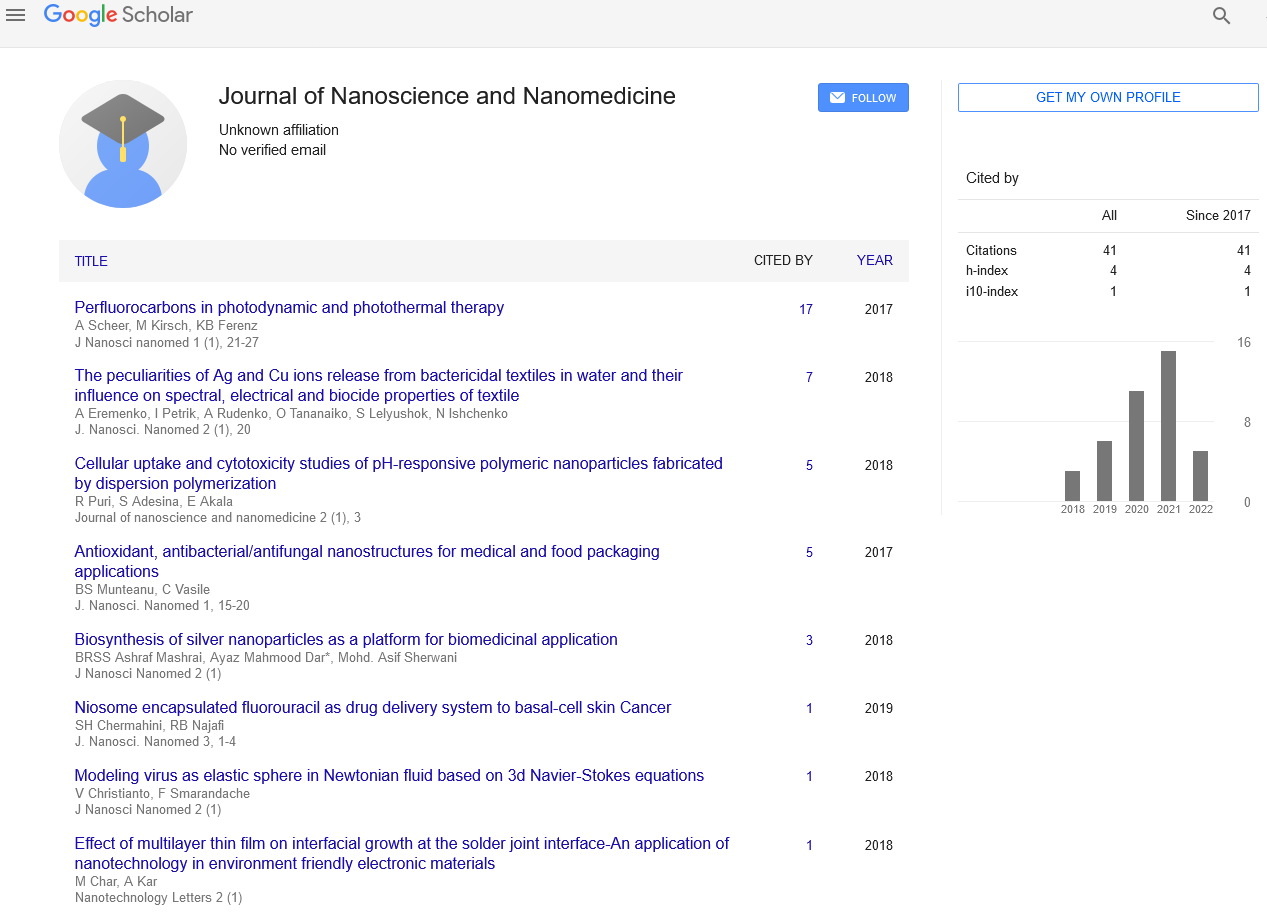Indoor air monitoring and smart demand control ventilation based on photo-activated gas sensor networks
Received: 24-Sep-2018 Accepted Date: Sep 25, 2018; Published: 30-Sep-2018
Citation: Espid E. Indoor air monitoring and smart demand control ventilation based on photo-activated gas sensor networks. Nano Lett. 2018;2(2):12.
This open-access article is distributed under the terms of the Creative Commons Attribution Non-Commercial License (CC BY-NC) (http://creativecommons.org/licenses/by-nc/4.0/), which permits reuse, distribution and reproduction of the article, provided that the original work is properly cited and the reuse is restricted to noncommercial purposes. For commercial reuse, contact reprints@pulsus.com
Environmental pollution is becoming a serious global health concern. People are regularly exposed to air pollution from outdoor sources such as transportation and industrial activities. These air pollutants may enter the building with outside air or may be generated internally. Ventilation is an important method for removal of these contaminants and to maintain good indoor air quality. The higher the ventilation rate, the better the indoor air quality can be achieved if the fresh air comes from the non-polluted ambient source. It is shown that higher ventilation rates can lead to lower rates of sick leave and the prevalence of common respiratory diseases [1]. However, a significant amount of energy is required to condition the indoor air, especially in cities where humidity is high in summer. It has been estimated that over 30% of energy in commercial buildings is consumed to handle the fresh air mainly for the electrical fan power and cooling/heating energy [2]. Although over-ventilation may lead to ensure of proper indoor air quality that satisfies the standards, it is a significant waste of energy and negatively affects the environment. On the other hand, under-ventilated buildings may have severe adverse effects on occupants. Therefore, an operationally cost-effective ventilation control strategy, such as smart demand control ventilation (DCV), is necessary for buildings.
Though CO2 is not a principal contaminant of concern, it has been widely used as an indicator of occupant-related contaminant sources to control DCV systems [3]. There are still several challenges associated with CO2- based DCV control systems:
Using CO2 as a baseline reference to measure and control ventilation would not be a precise method as the CO2 level may vary significantly due to production sources in the exterior of the building especially when the fresh air supply comes from the polluted ambient source.
The response time and recovery time of the sensors are in the range of several minutes to several hours so there will be a delay in air conditioning systems.
The most important issue with CO2 based DCV system is that it does not measure the concentration of any hazardous gas in the indoor air and thus exposure to these gases may cause various breathing problems for the occupants.
To address these challenges, it is highly recommended to use a set of gas sensors to estimate the actual concentration of several indoor contaminants and adjusts the fresh air supply rate to maintain several indoor air pollutants at acceptable levels. Among the variety of sensors developed for gas pollutants, UV activated solid-state chemical gas sensors that utilize UV-LEDs for sensor activation at room temperature are promising candidates for this application [4-6].
These sensors have fast response and recovery time constants, are environmentally friendly, operate with significantly lower energy and have a very long lifetime with self-cleaning specifications [7]. The aforementioned sensor networks not only provide selective sensing, but also offer the possibility of being configured in a matrix arrangement to fit different measuring environments [8]. Although the technology is new, it has the potential to transform the entire spectrum of sensor development and demand control ventilation systems to lower the building energy consumption and reduce diseases caused by polluted indoor air.
REFERENCES
- Seppa NN, Fisk WJ. Association of ventilation rates and CO2 concentrations with health and other responses. Indoor Air. 1999;9:226-52.
- Chao CYH, Hu JS. Development of a dual-mode demand control ventilation strategy for indoor air quality control and energy saving. Building and Environment. 2004;39:385-97.
- Fisk WJ, De Almeida AT. Sensor-based demand-controlled ventilation: A review. Energy and Buildings. 1998;29:35-45.
- Espid E, Taghipour F. UV-LED Photo-activated Chemical Gas Sensors: A Review Crit Rev Solid State Mater Sci. 2017;1-17.
- Espid E, Taghipour F. Facile synthesis and UV-activated gas sensing performance of Ag: ZnO Nano-Ellipsoids. 2018;7:3089-93.
- Prades JD, Jimenez-Diaz R, Hernandez RF, et al. Equivalence between thermal and room temperature UV light-modulated responses of gas sensors based on individual SnO2 nanowires. Sensors Actuators B Chem. 2009;140:337-41.
- Espid E, Taghipour F. Sensors and Actuators B: Chemical Development of highly sensitive ZnO / In2O3 composite gas sensor activated by UV-LED. Sensors Actuators B Chem. 2017;241:828-39.
- Espid E. Sensor systems in mining industry. Nano lett 2017;1:1





